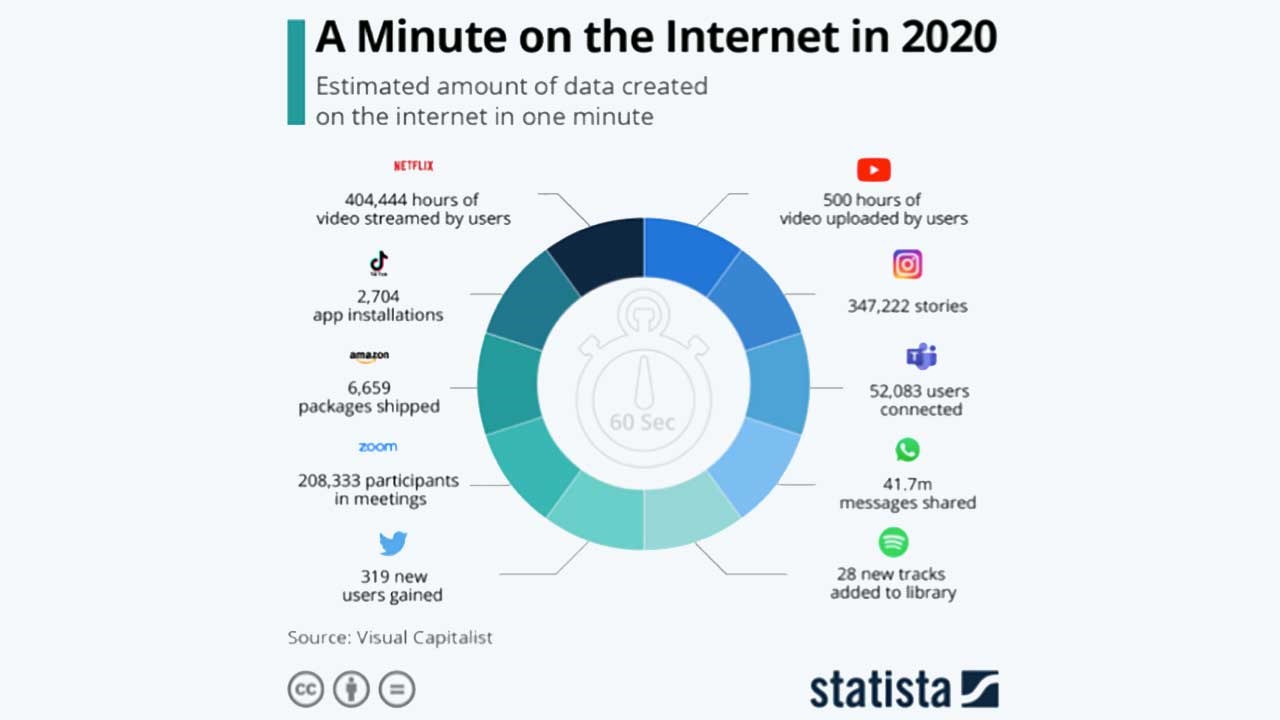Digital Footprinting
The 2020 pandemic had a major impact on work and leisure, and Hay Festival was no exception. We had to cancel our live events and move to being solely digital for 2020 and 2021. This was not easy but it has had some significant environmental benefits in terms of lowering our CO₂ emissions particularly from transport and infrastructure. However it does not entirely remove the CO₂ impacts and, in fact, the largest part of the digital carbon footprint is due to video streaming – crucial for events such as ours.
As part of our commitment to running sustainable festivals, we have been measuring the impact of our Digital Festival Footprint and will share the information once the results are known. With support from Keystone Positive Change Investment Trust, we have also been looking at ways of reducing our digital impacts and have created a fact sheet below to outline what makes up a digital footprint and how it can be reduced.

Reducing the Impacts of Your Digital Carbon Footprint
What is a Digital Carbon Footprint?
The digital transformation has brought huge benefits including having a positive impact, reducing CO₂ emissions. However there is still a significant impact from manufacturing and using digital devices and these emissions are referenced as a “digital CO₂ footprint” or “digital carbon footprint”.
How is a Digital Footprint Generated?
In 2019 approximately 4.1 billion people worldwide had access to the Internet and every internet connection, no matter what for, contributes to an ever-increasing global demand for energy and thus also for increasing CO₂ emissions. Jens Gröger, senior researcher at the Öko-Institut, estimates that each search query emits around 1.45 grams of CO₂. If we use a search engine to make around 50 search queries per day, this will produce 26 kilograms of CO₂ per year.
However, search queries are only the tip of the iceberg, the bulk of the digital footprint is caused by video streaming due to large data sizes of videos. 80% of all data flows through the internet as moving images. Online videos account for almost 60% of global data transfer. Transmitting these moving images requires huge amounts of data and higher resolutions generate more data. According to The Shift Project, the total CO₂ emissions generated of streamed online video is over 300 million tons per year (based on measurements taken in 2018). This is equivalent to the CO₂ emissions generated by the whole of Spain in a year.

The non-profit organisation The Shift Project has looked at nearly 170 international studies on the environmental impact of digital technologies and they report that their share of global CO₂ emissions increased from 2.5 to 3.7% between 2013 and 2018. That means that our use of digital technologies now causes more CO₂ emissions and has a bigger global warming impact than the entire aviation industry (currently around 2.5% of global emissions).
Individually your digital footprint won’t make a big impact but when we scale these up on a global scale, Google, in its 2017 Environmental Report, puts its carbon footprint for 2016 at 2.9 million tons of CO₂e and its electrical energy consumption at 6.2 terawatt hours (TWh).
What Can You Do?
A few suggestions to reduce your digital emissions:
- Reduce streaming – downloading is much less energy-intensive.
- Play songs as audio files rather than streaming them as a video or watch the video at a lower resolution.
- Keep your devices longer, don’t upgrade just because the latest version is available.
- Dispose of old devices correctly, don’t just throw them in the bin.
- Empty your email inbox regularly to reduce data storage.
- Store data locally, try to use the Cloud as little as possible.
- Use WLAN networks instead of mobile networks.
- Source your electricity through a renewable energy supplier (photovoltaic, hydropower, wind, biomass).
Our Digital Footprinting Project is sponsored by:
